Micro-Doppler Ambiguity Resolution for Wideband Terahertz Radar Using Intra-Pulse Interference
Abstract
:1. Introduction
2. Theory Analysis
2.1. Radar Echo Signal Model of Micro-Motion Targets
2.2. Micro-Doppler Ambiguity Resolution Based on Intra-Pulse Interference
3. The Wideband Terahertz Radar System and Experiments
3.1. The Terahertz Radar System
3.2. The Experiments on Rotating Targets
4. Experimental Results and Analysis
4.1. The Experiment Results
4.2. Performance Analysis
5. Conclusions
Acknowledgments
Author Contributions
Conflicts of Interest
References
- Minamide, H. Development of high-power terahertz-wave sources for finding novel applications. IEEE Trans. Terahertz Sci. Technol. 2015, 5, 1104–1109. [Google Scholar]
- Lu, Z.; Liu, X.; Pan, Y.; Huang, S.; Chen, L.; Wang, H. Application of terahertz technology in cooperative detection of space targets. In Proceedings of the 2016 IEEE 9th UK-Europe-China Workshop on Millimetre Waves and Terahertz Technologies (UCMMT), Qingdao, China, 5−7 September 2016; pp. 202–205. [Google Scholar]
- Fukasawa, R. Terahertz imaging: Widespread industrial application in non-destructive inspection and chemical analysis. IEEE Trans. Terahertz Sci. Technol. 2015, 5, 1121–1127. [Google Scholar]
- Sun, Z.; Li, C.; Gu, S.; Fang, G. Fast Three-Dimensional image reconstruction of targets under the illumination of terahertz gaussian beams with enhanced Phase-Shift migration to improve computation efficiency. IEEE Trans. Terahertz Sci. Technol. 2014, 4, 479–490. [Google Scholar] [CrossRef]
- Zhang, B.; Pi, Y.M.; Li, J. Terahertz imaging radar with inverse aperture synthesis techniques system structure. IEEE Sens. J. 2015, 15, 330–390. [Google Scholar] [CrossRef]
- Li, J.; Pi, Y.; Yang, X. Micro-Doppler signature feature analysis in terahertz band. J. Infrared Millim. Terahertz Waves 2010, 31, 319–328. [Google Scholar] [CrossRef]
- Xu, Z.; Tu, J.; Li, J.; Pi, Y. Research on micro-feature extraction algorithm of target based on terahertz radar. EURASIP J. Wirel. Commun. Netw. 2013, 2013, 1–9. [Google Scholar] [CrossRef]
- Zhuang, J.B.; Deng, Z.M.; Ye, Y.S.; Zhang, Y.X.; Chen, Y.Y. Micro-Doppler ambiguity resolution based on Short-time compressed sensing. J. Electron. Comput. Eng. 2015, 2015, 1–7. [Google Scholar] [CrossRef]
- Sun, J.; Tian, J.; Wang, G.; Mao, S. Doppler ambiguity resolution for multiple PRF radar using iterative adaptive approach. Electron. Lett. 2010, 46, 1562–1563. [Google Scholar] [CrossRef]
- Zhang, S.X.; Xing, M.D.; Xia, X.H.; Zhang, L.; Guo, R.; Liao, Y.; Bao, Z. Multichannel HRWS SAR imaging based on range-variant channel calibration and multi-Doppler-direction restriction ambiguity suppression. IEEE Trans. Geosci. Remote Sens. 2014, 52, 4306–4327. [Google Scholar] [CrossRef]
- Yang, Q.; Deng, B.; Wang, H.Q.; Qin, Y.L. A Doppler aliasing free micro-motion parameter estimation method in the terahertz band. EURASIP J. Wirel. Commun. Netw. 2016, 61, 1–9. [Google Scholar] [CrossRef]
- Zhang, W.; Li, K.; Jiang, W. Parameter Estimation of Radar Targets with Macro-Motion and Micro-Motion Based on Circular Correlation Coefficients. IEEE Signal Process. Lett. 2015, 22, 633–637. [Google Scholar] [CrossRef]
- Peng, B.; Liu, Z.; Wei, X.; Li, X. Sinusoidal frequency modulation sparse recovery for precession rate estimation using low-frequency long-range radar. IEEE Sens. J. 2015, 15, 7329–7340. [Google Scholar] [CrossRef]
- Suresh, P.; Thayaparan, T.; Obulesu, T.; Venkataramaniah, K. Extracting Micro-Doppler radar signatures from rotating targets using Fourier-Bessel transform and time–frequency analysis. IEEE Trans. Geosci. Remote Sens. 2014, 52, 3204–3210. [Google Scholar] [CrossRef]
- Liang, M.Y.; Zhang, C.L.; Zhao, R.; Zhao, Y.J. Experimental 0.22 THz stepped frequency radar system. J. Infrared Millim. Terahertz Waves 2014, 35, 780–789. [Google Scholar] [CrossRef]
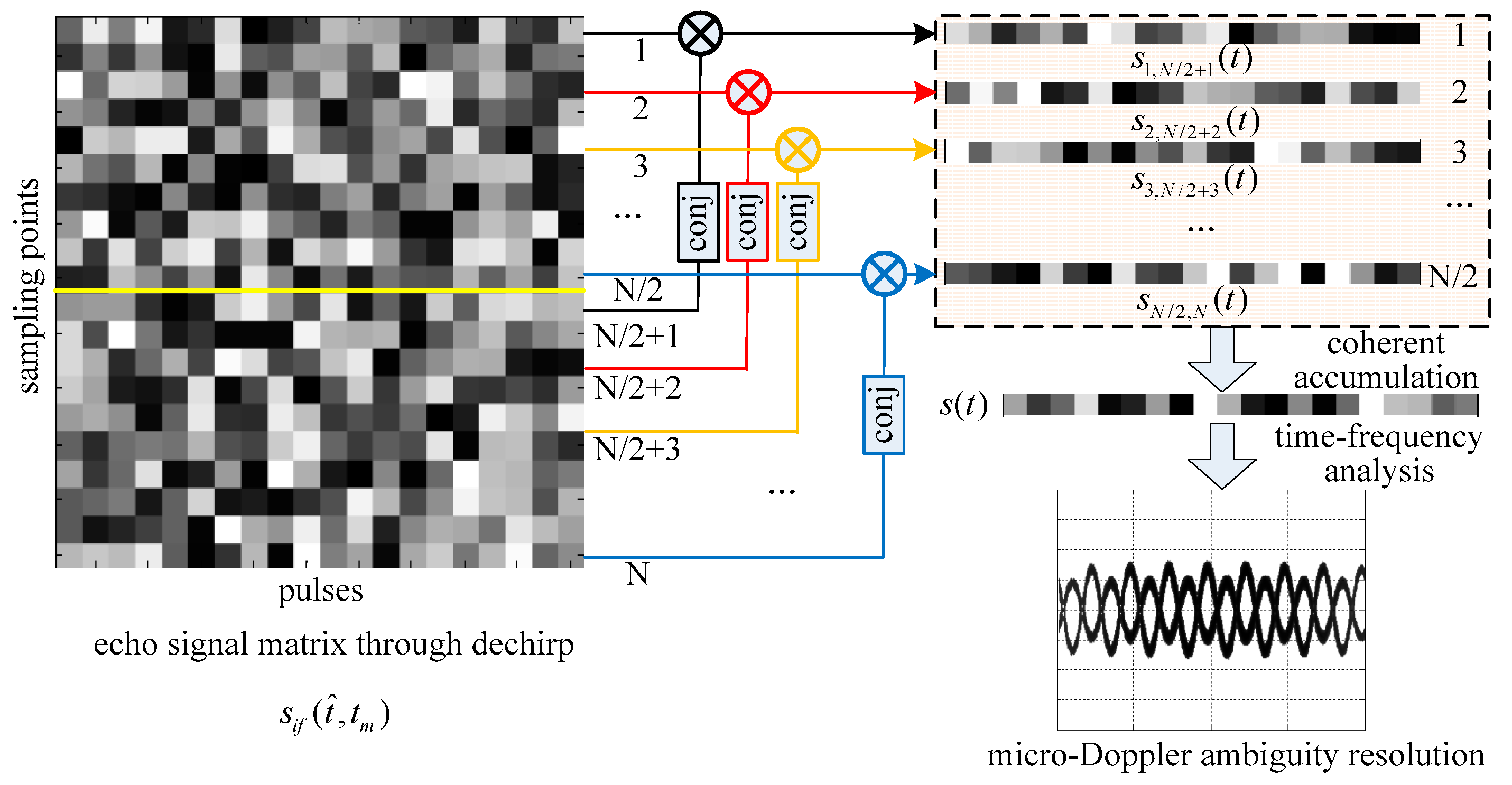
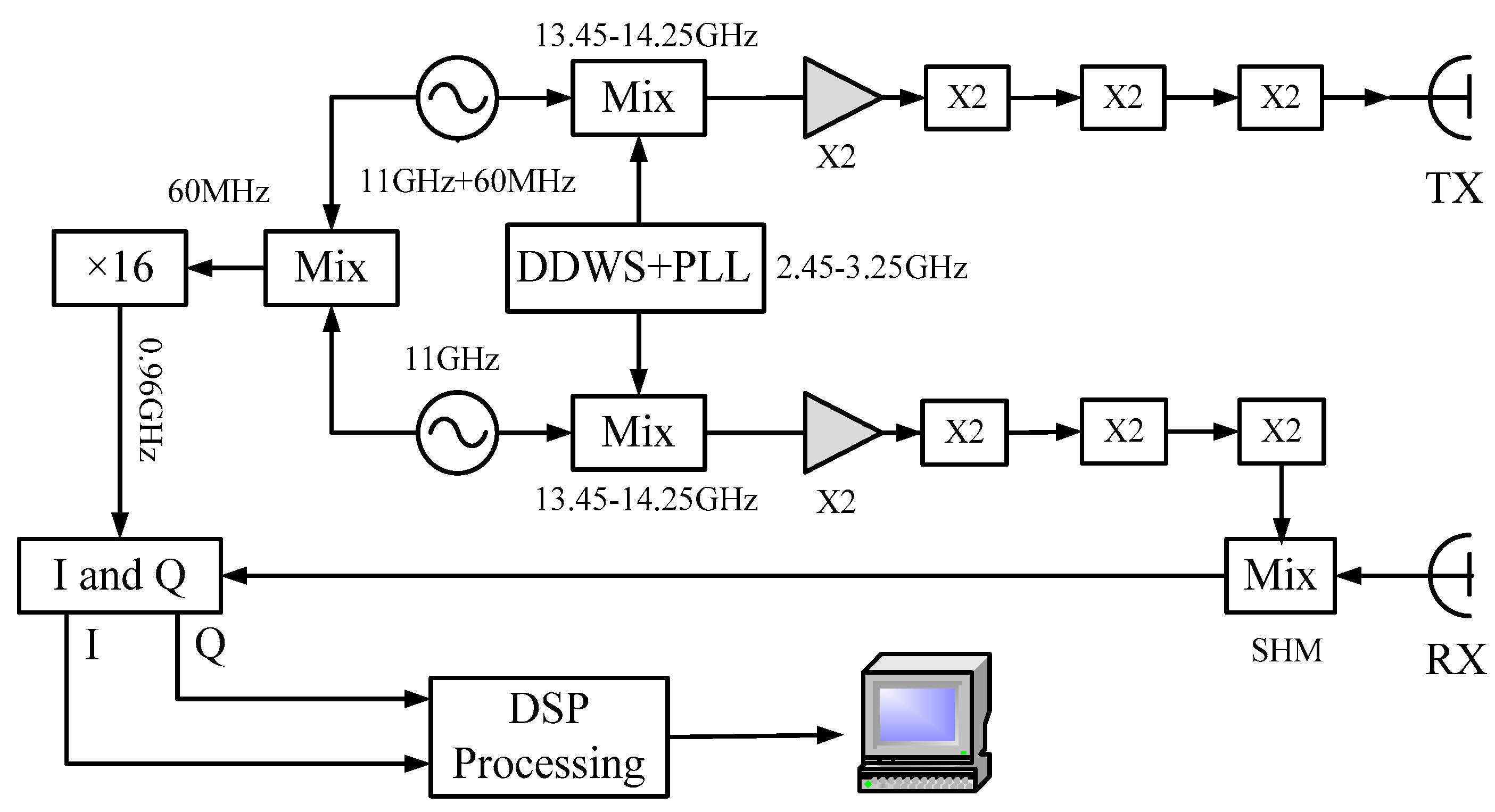
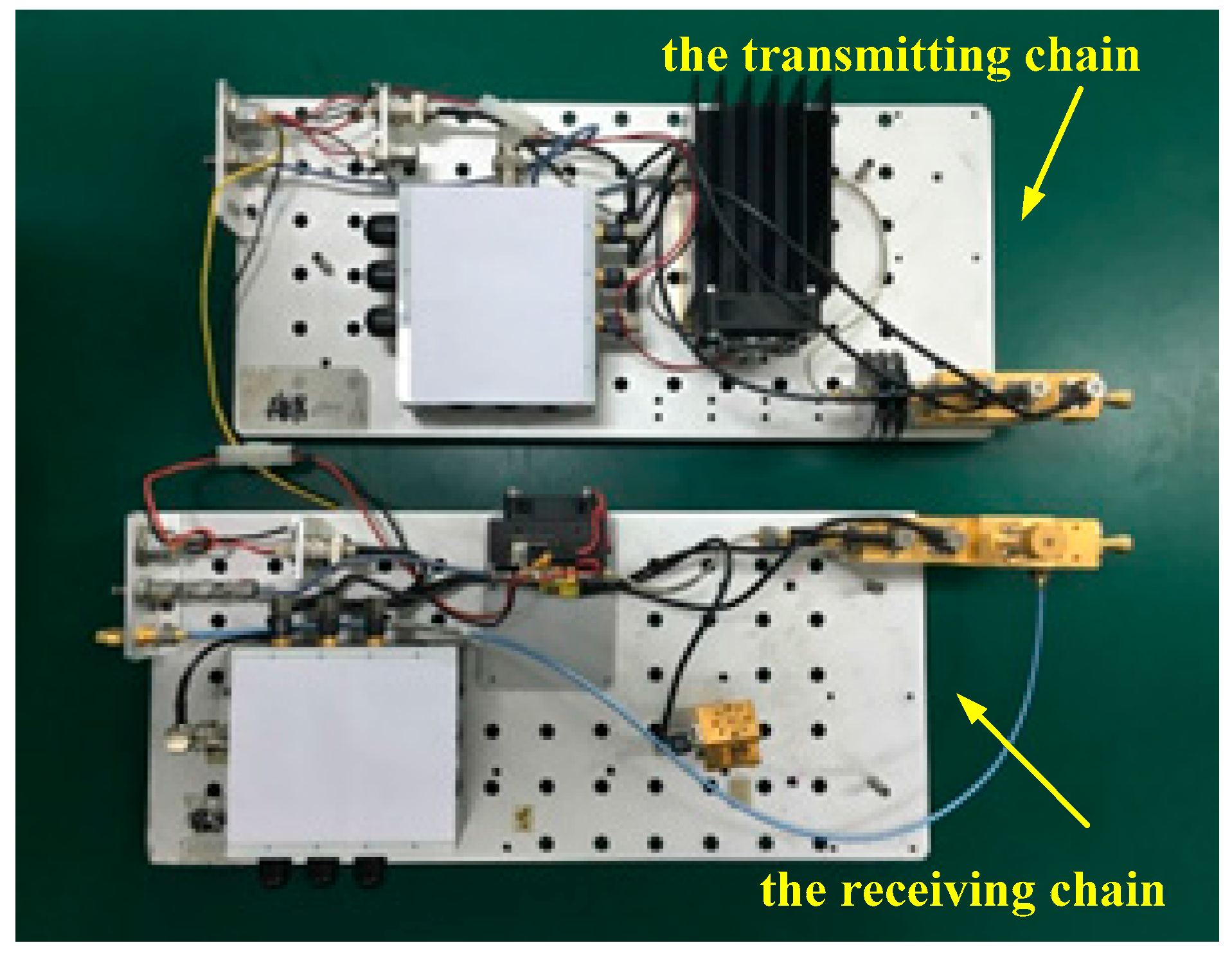
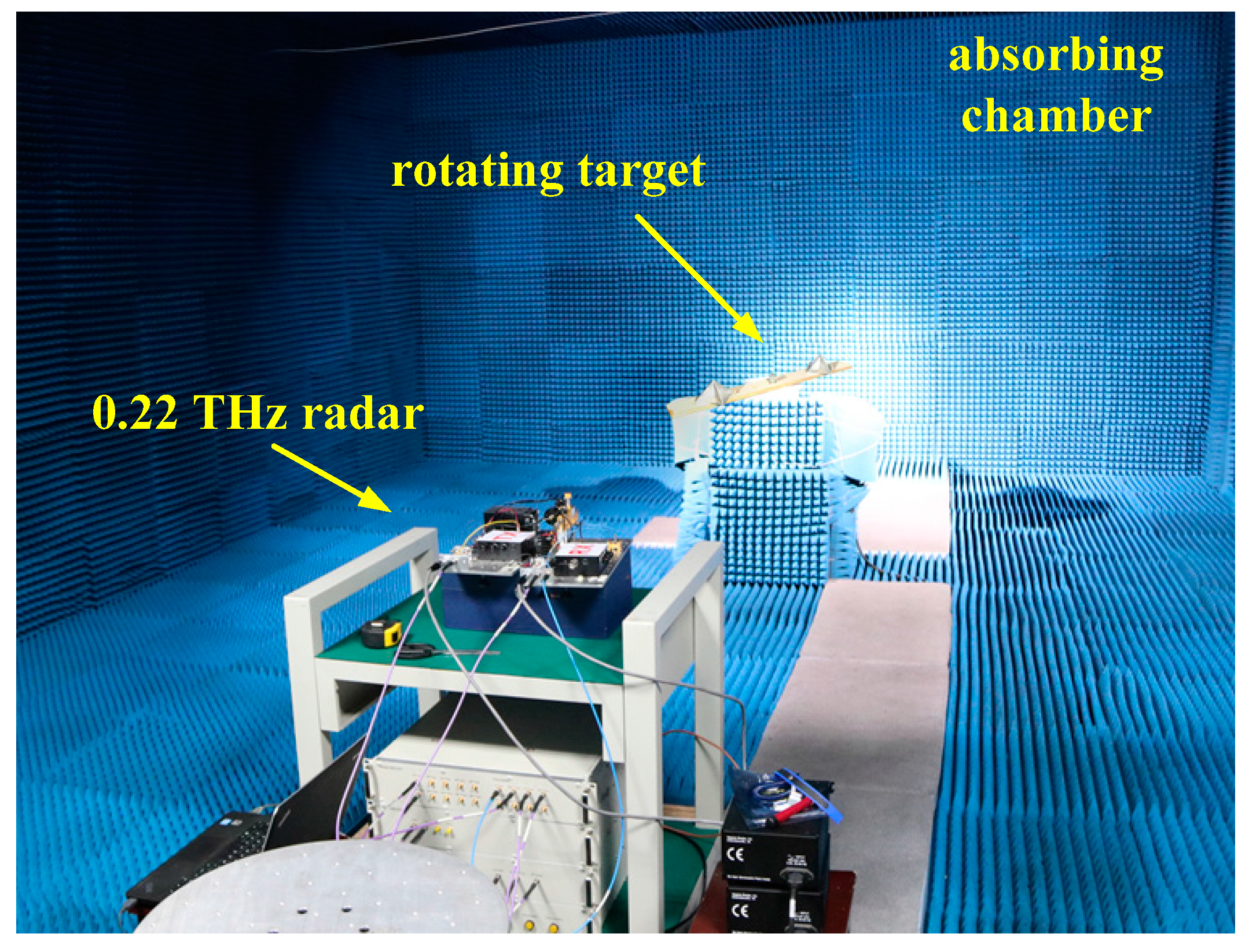
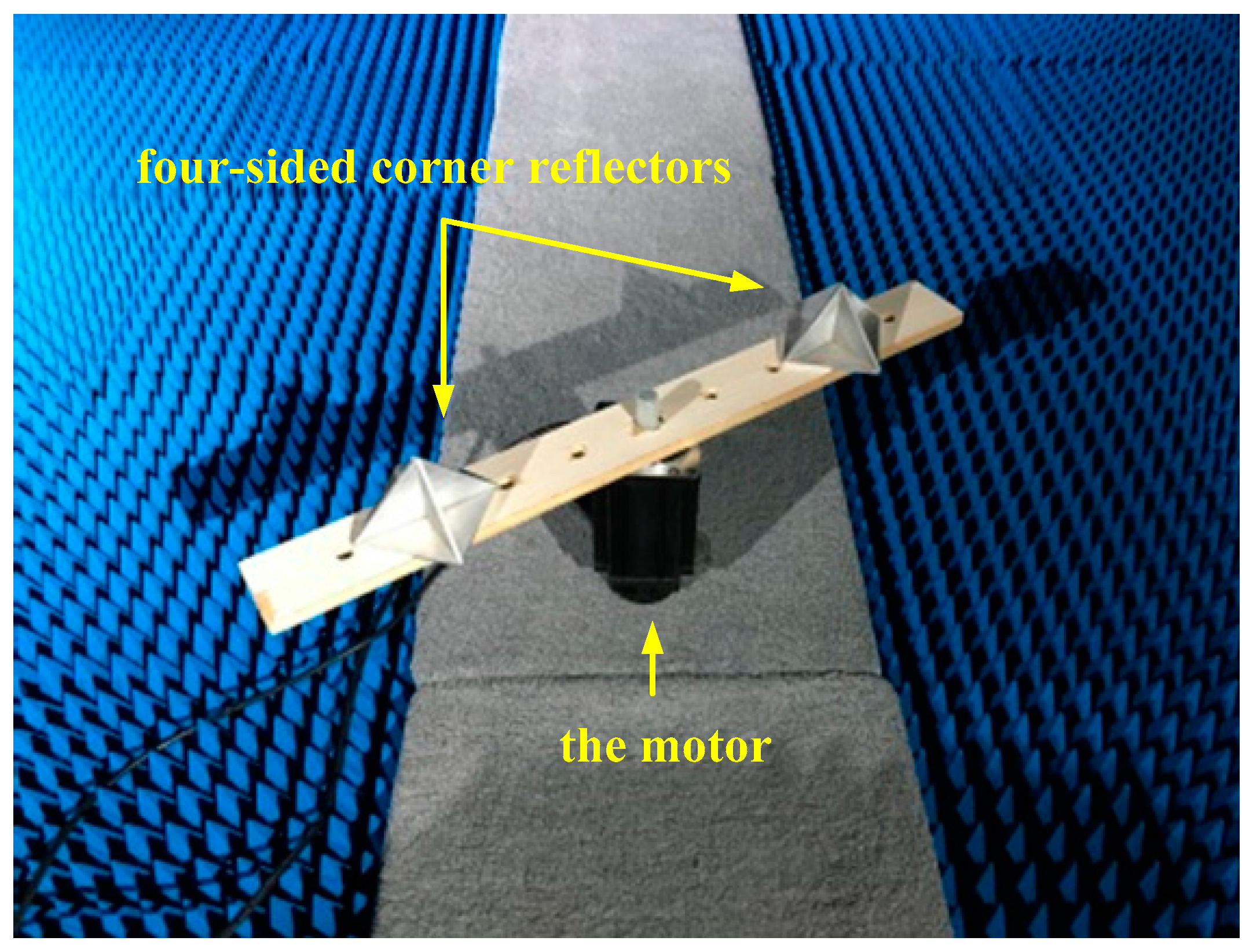
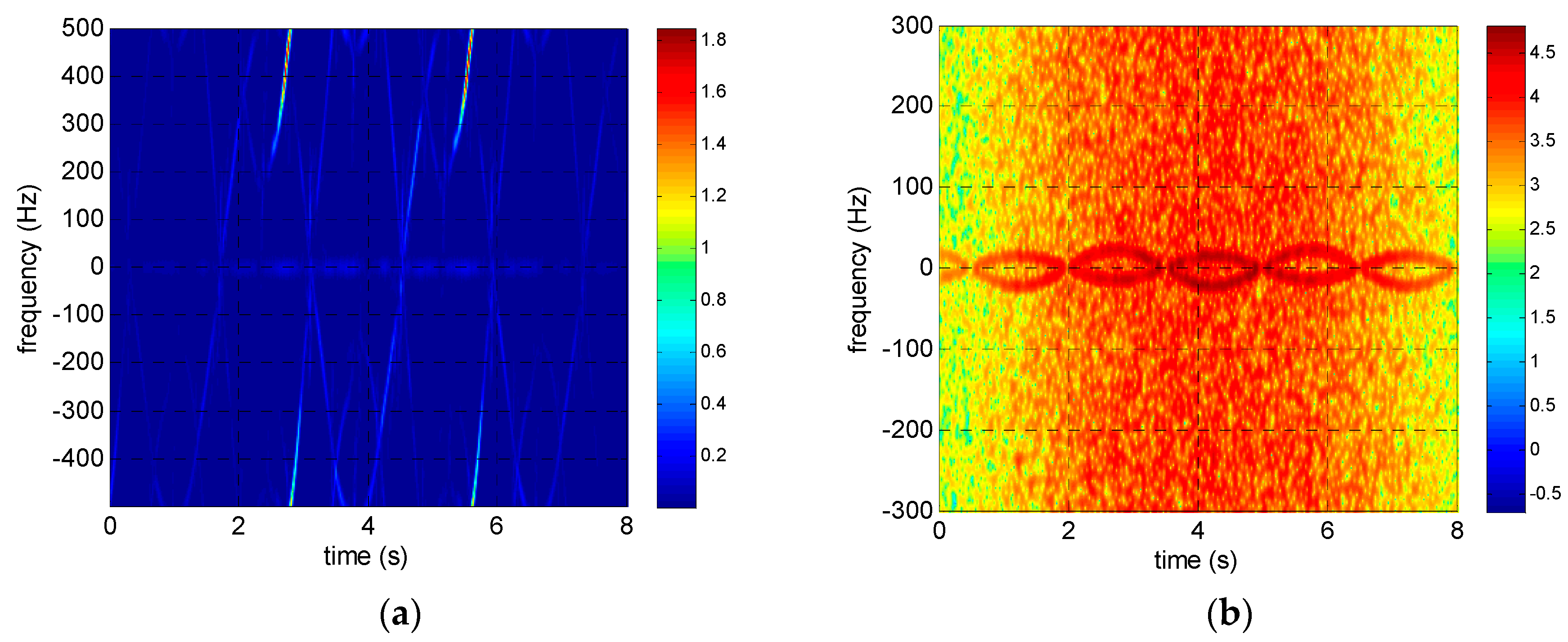
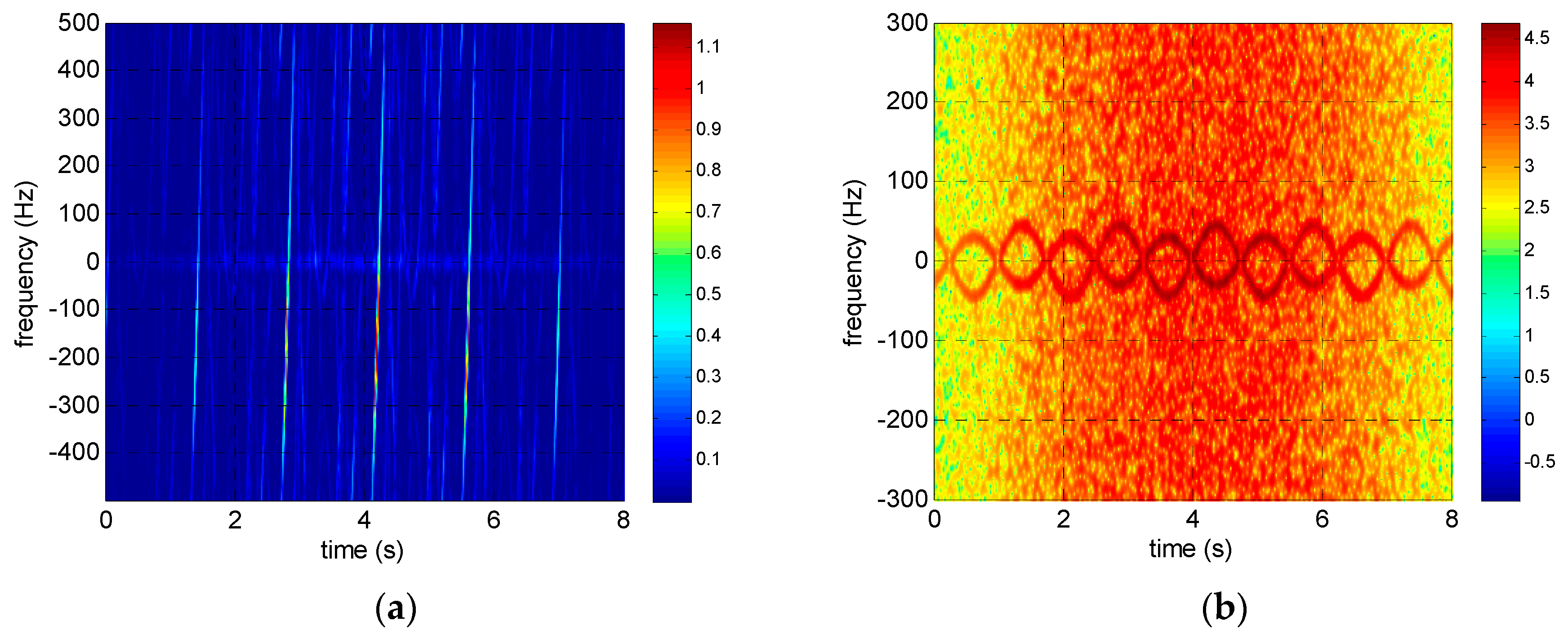
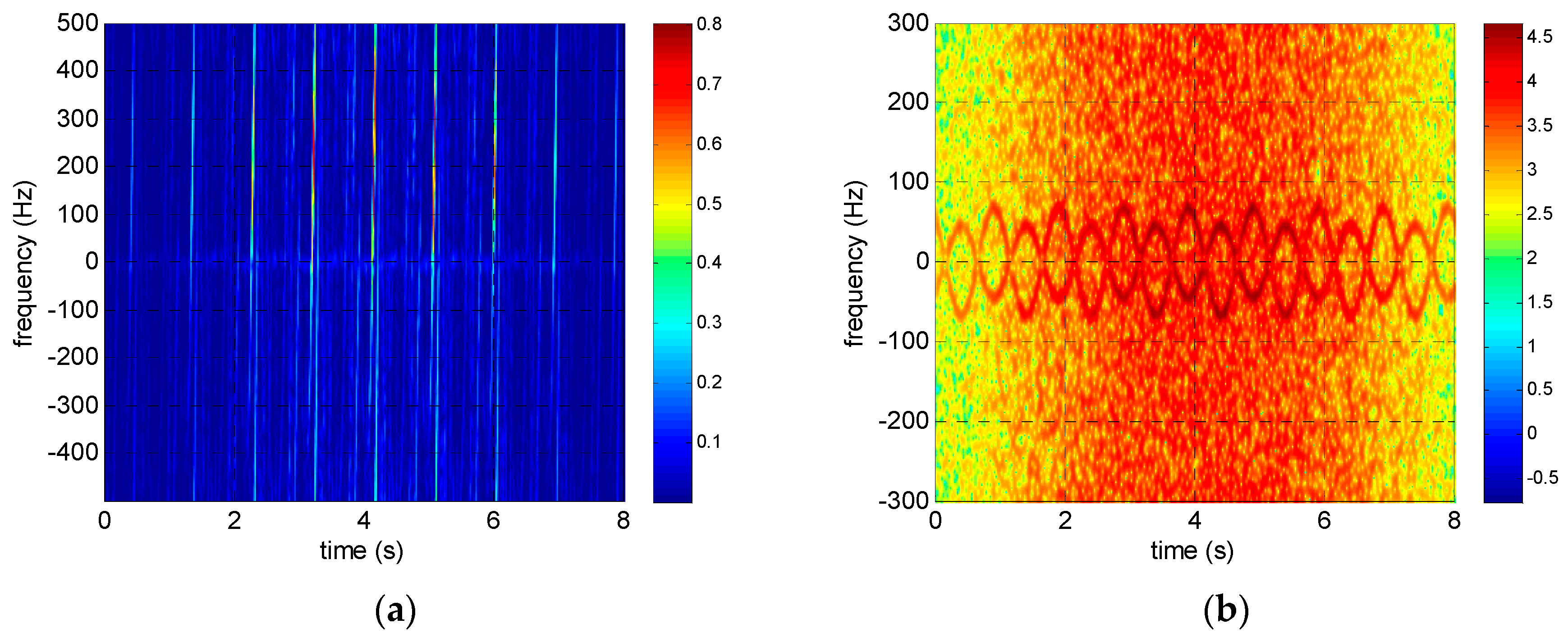
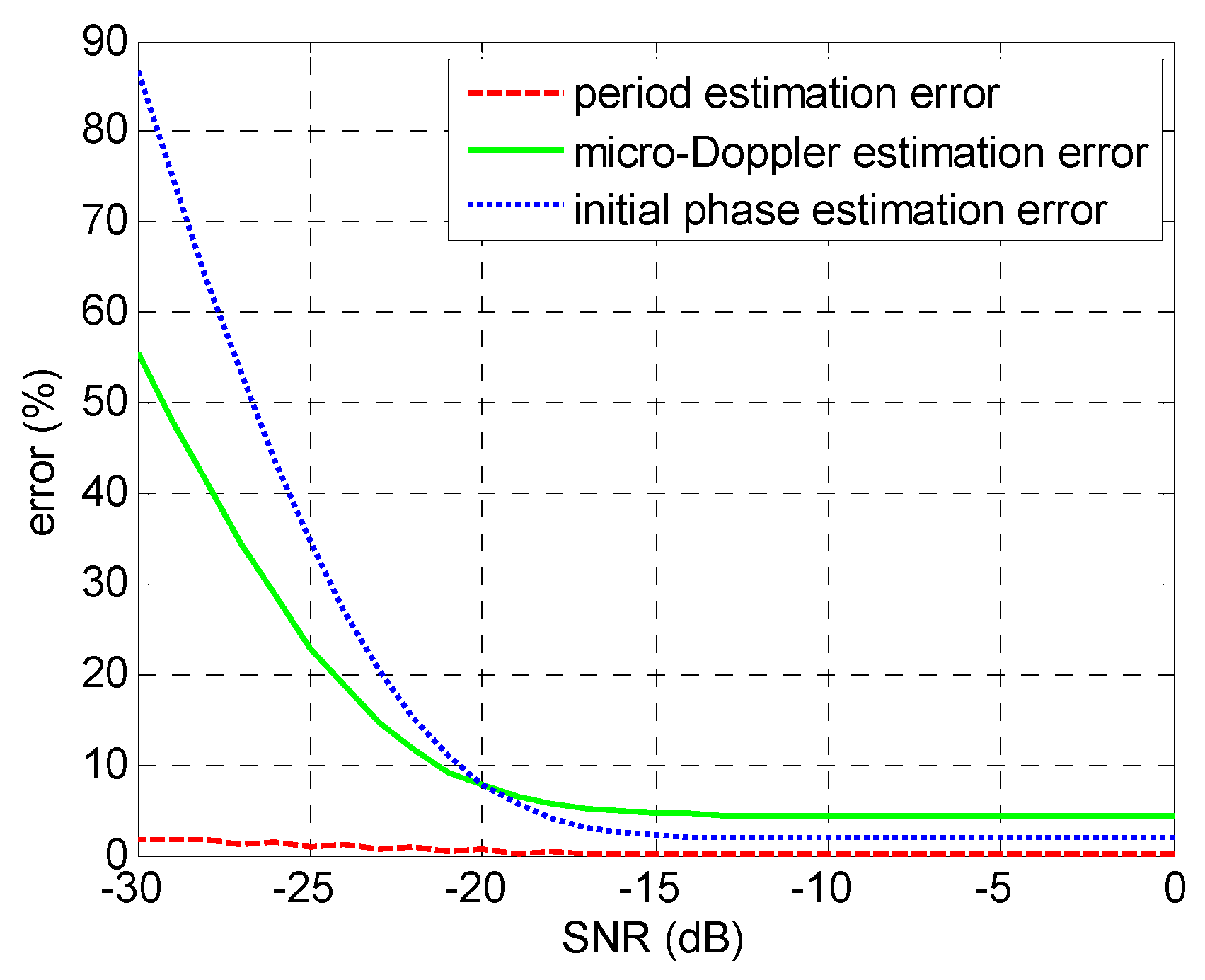
| 20 r/min | 40 r/min | 60 r/min | |
|---|---|---|---|
| theoretical micro-Doppler values (Hz) | 742.59 | 1485.18 | 2227.77 |
| micro-Doppler values after intra-pulse interference (Hz) | 21.45 | 42.89 | 64.34 |
| estimated micro-Doppler values (Hz) | 22.10 | 44.47 | 66.58 |
| relative errors (%) | 3.03 | 3.68 | 3.48 |
© 2017 by the authors. Licensee MDPI, Basel, Switzerland. This article is an open access article distributed under the terms and conditions of the Creative Commons Attribution (CC BY) license (http://creativecommons.org/licenses/by/4.0/).
Share and Cite
Yang, Q.; Qin, Y.; Deng, B.; Wang, H.; You, P. Micro-Doppler Ambiguity Resolution for Wideband Terahertz Radar Using Intra-Pulse Interference. Sensors 2017, 17, 993. https://doi.org/10.3390/s17050993
Yang Q, Qin Y, Deng B, Wang H, You P. Micro-Doppler Ambiguity Resolution for Wideband Terahertz Radar Using Intra-Pulse Interference. Sensors. 2017; 17(5):993. https://doi.org/10.3390/s17050993
Chicago/Turabian StyleYang, Qi, Yuliang Qin, Bin Deng, Hongqiang Wang, and Peng You. 2017. "Micro-Doppler Ambiguity Resolution for Wideband Terahertz Radar Using Intra-Pulse Interference" Sensors 17, no. 5: 993. https://doi.org/10.3390/s17050993






